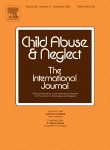
Family of origin environments in two clinical samples of survivors of intra-familial, extra-familial, and both types of sexual abuse
Fiche mise à jour le 17 juin 2020
En bref
Scott M. Hyman,
Raquel C. Andrés-Hyman
Description
Objective:
It has been suggested that survivors of ongoing childhood sexual abuse (CSA) tend to have been reared in ineffective family environments that render them particularly vulnerable to maltreatment and which foster psychological difficulties beyond those accounted for solely by their abuse. If this conjecture is valid, one would expect that the family of origin environments of CSA survivors would be disturbed whether their abuser was intra-familial or extra-familial. To assess this hypothesis, two studies compared the childhood family of origin environments and supportive parenting characteristics of a clinical sample of women sexually abused by family members only (the intra-familial group), by non-family members only (the extra-familial group), and by both family and non-family members (the “both” group).
Method:
Study 1 compared the three groups (total N = 213) using the Family Environment Scale (FES). Study 2 compared groups (total N = 86) on the positive parenting scales of the Exposure to Abusive and Supportive Environments Parenting Inventory (EASE-PI).
Results:
In Study 1, multivariate analyses indicated significant differences on the independence, cohesion, and conflict subscales of the FES. Pairwise comparisons revealed that the extra-familial group reported significantly higher levels of family independence and lower levels of conflict than the other two groups. In addition, the extra-familial group reported higher levels of cohesion than the intra-familial group. However, the effect sizes of these comparisons were extremely small. In Study 2, multivariate analyses revealed no group differences on the EASE-PI scales.
Conclusions:
Low effect sizes on the three significant FES scales, non-significance on the remaining seven FES scales, and non-significance on the EASE-PI scales suggest that there is considerable similarity in the family of origin environments of adult female CSA survivors seeking therapy regardless of whether their perpetrators were family members, non-family members, or both family and non-family members.
Étude comparative, Agression sexuelle extrafamiliale, Agression sexuelle intrafamiliale, Psychopathologie familiale, Relation familiale, Victime


